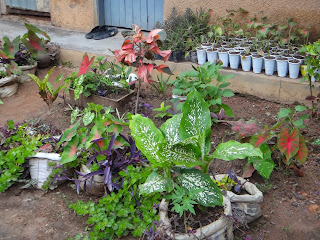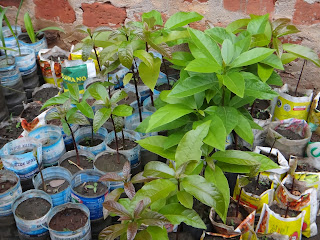The vast majority of people in the North participate in rain-fed subsistence agriculture. However, mechanized agriculture is rare here and is almost exclusively used by the rare people who engage in large-scale corporate agriculture. Combined with climate change, for most people there is a low output of produce each season. People use simple farm tools like hand hoes and ox ploughs. Farmers add value at the small scale by processing and packaging produce themselves, but most grains and cereals are poorly preserved and bagged and so there is a lot of loss due to pests like weevils. There is poor storage and transportation options in terms of vehicle access, cost of fuel, and the state of roads. So most of the produce is mostly consumed at home.
There isn't much variety in products. The main crops are simsim (sesame), groundnuts (peanuts), beans, cassava, and maize. Unfortunately, there is no sound agricultural research centre in this part of the country. There are also no cooperatives and many farmers simply do not know what the market value of their produce is. To add to this, most people find current tax structures very discouraging and demoralizing. We have a growing population and yet a decreasing supply of quality food. Poverty produces many social ills, and this is true in the agricultural sector as well – in Kitgum, for example, theft of simsim (sesame) from gardens has seriously discouraged farmers from continuing with their work. The price of food goes up as new pests and diseases enter fields.
The country of Uganda has extension services like NAADS, which stands for National Agricultural Advisory Service. NAADS encourages what they call modern farming, and so they have promoted the increased use of GMOs, hybrid species of plants and animals, as well as synthetic herbicides and pesticides. There is an added issue that can be observed due to the effects of mass displacement during the war. Land conflicts have arisen because families who have returned from living for so many years in the IDP camps are unsure of the boundaries of their land, and the elders who would normally settle those disputes have since passed away.
Many youths have now decided to settle in town because they are reluctant to participate in agriculture like their counterparts and elders in rural areas. They do not want to fight for land. The problem is made worse because most people my age grew up in IDP camps and so aren't familiar with or comfortable in a traditional village and agricultural setting. As a result, a lot of land is sitting idle because of problems with land wrangles and tenure uncertainty. This is why the Gulu Peace Gardening Project is so important. It seeks to combat all of these social and political issues that stem from the state of agricultural farming in a post-war zone. We are always looking for help and we will continue until urban peace gardening become the norm in Gulu town.






